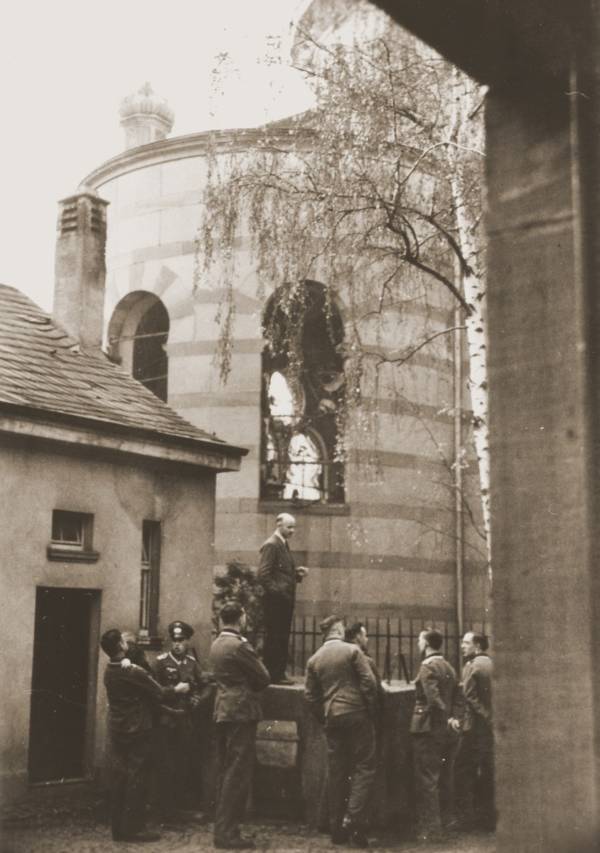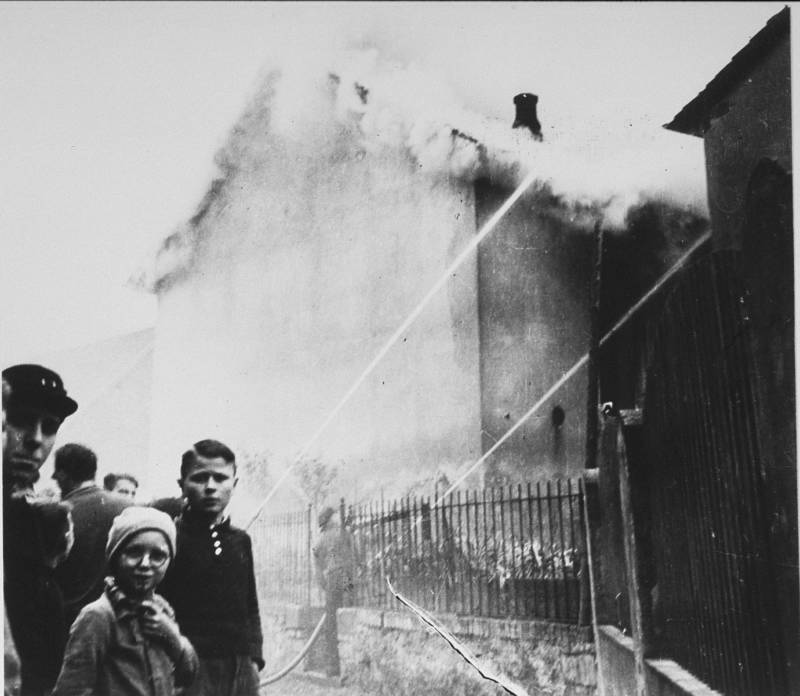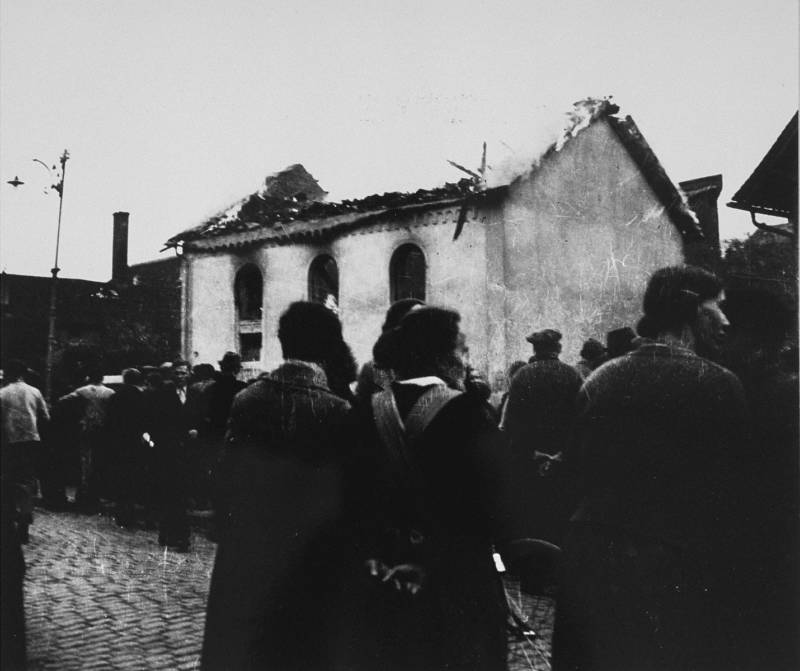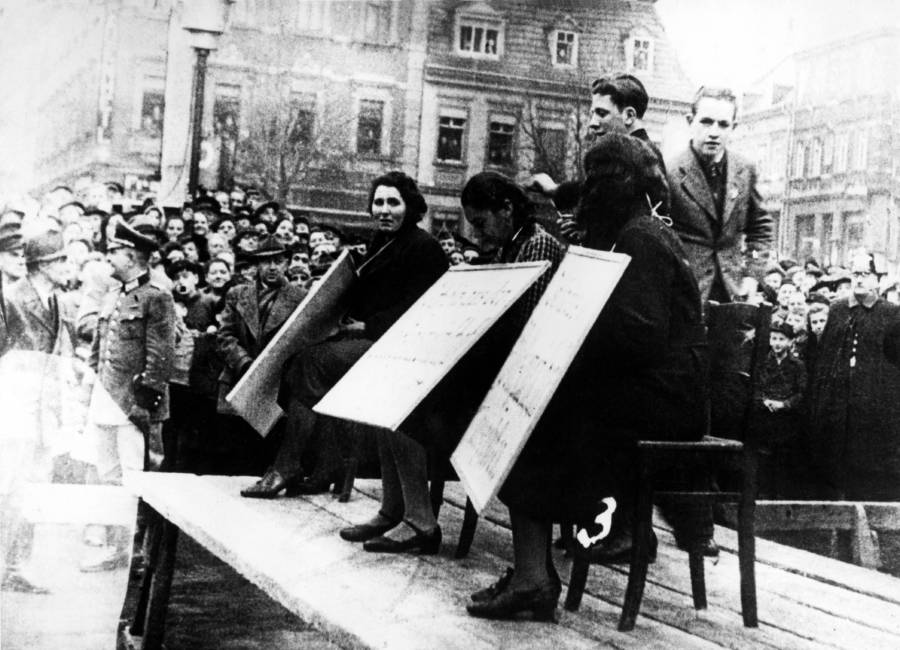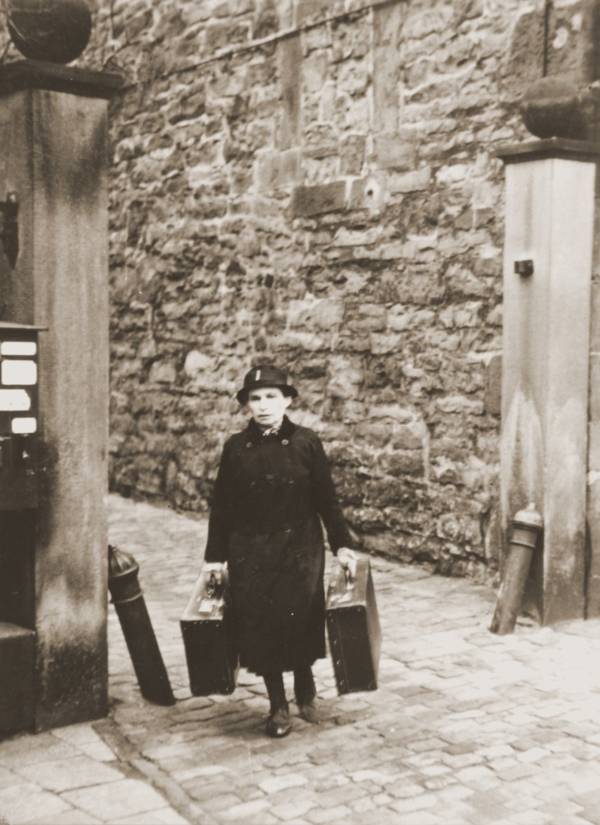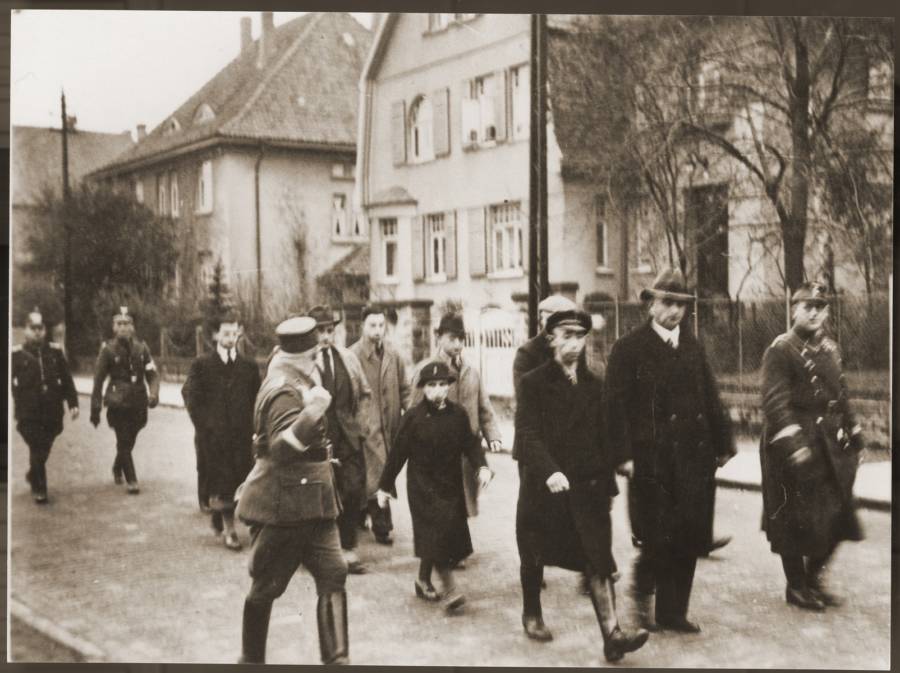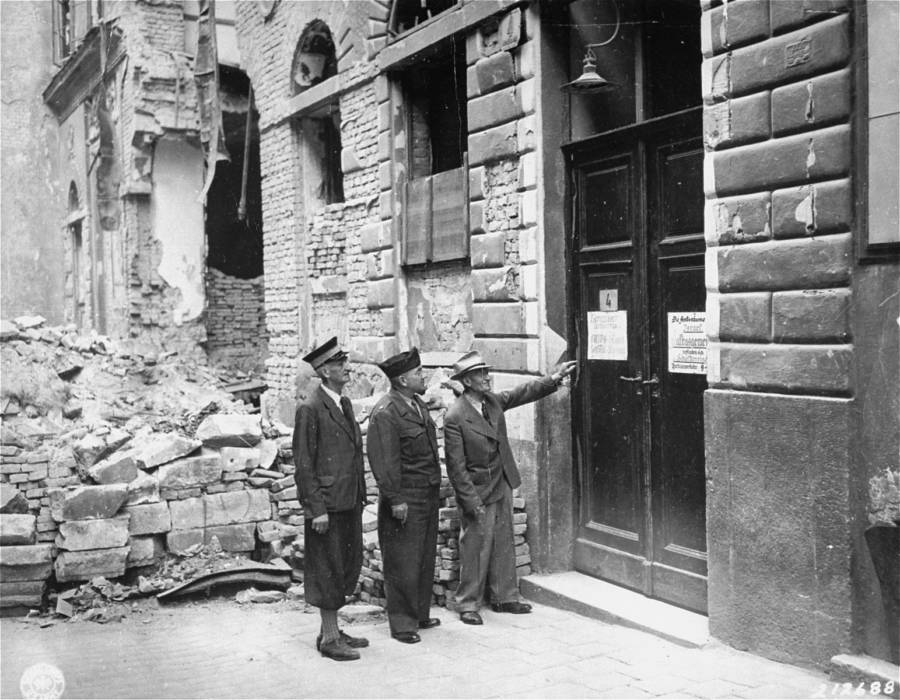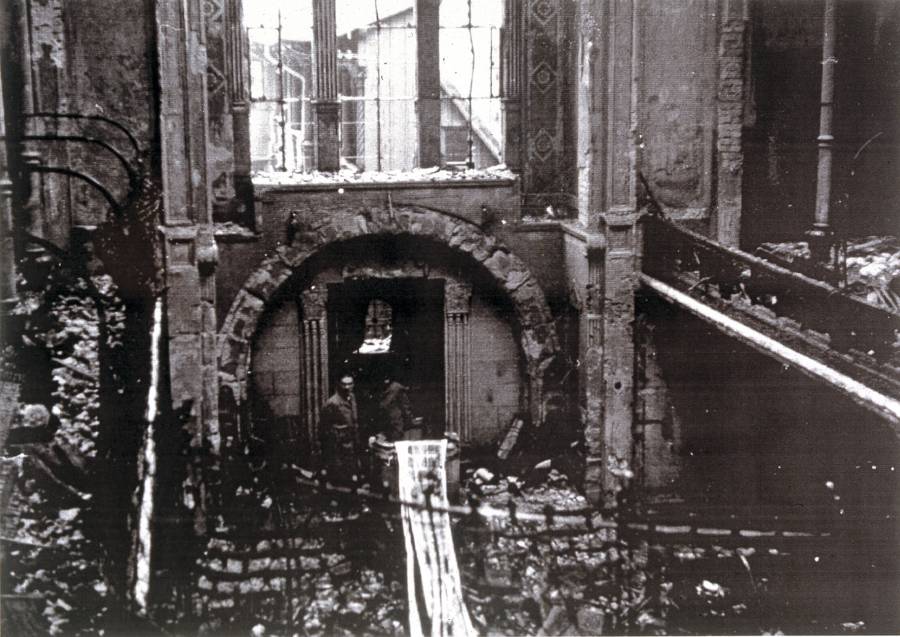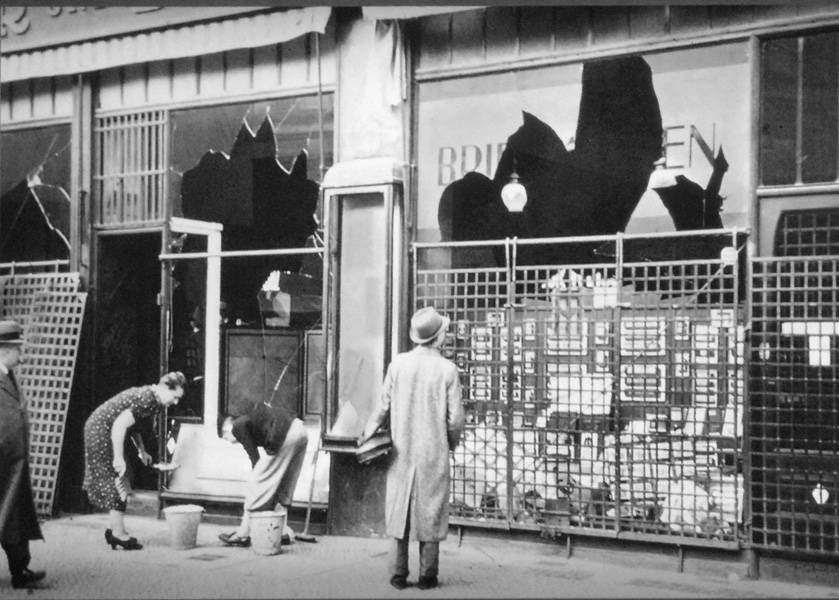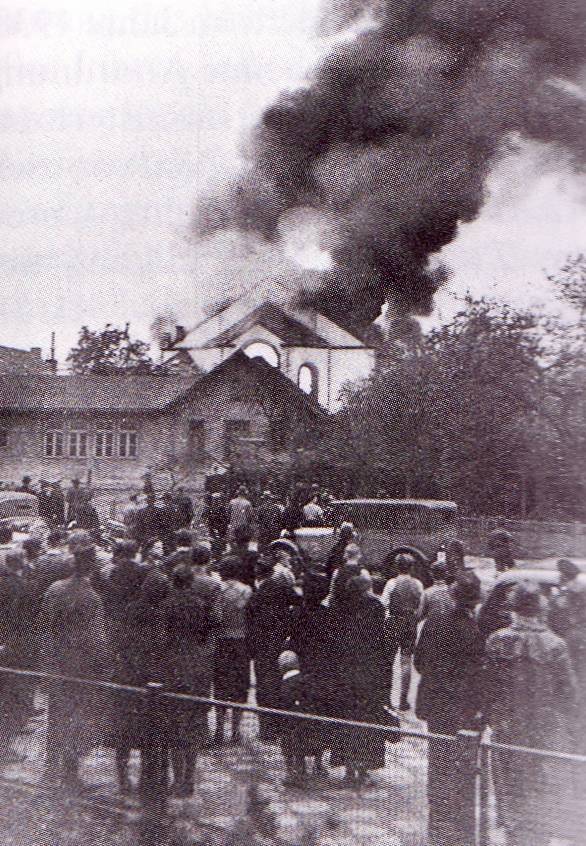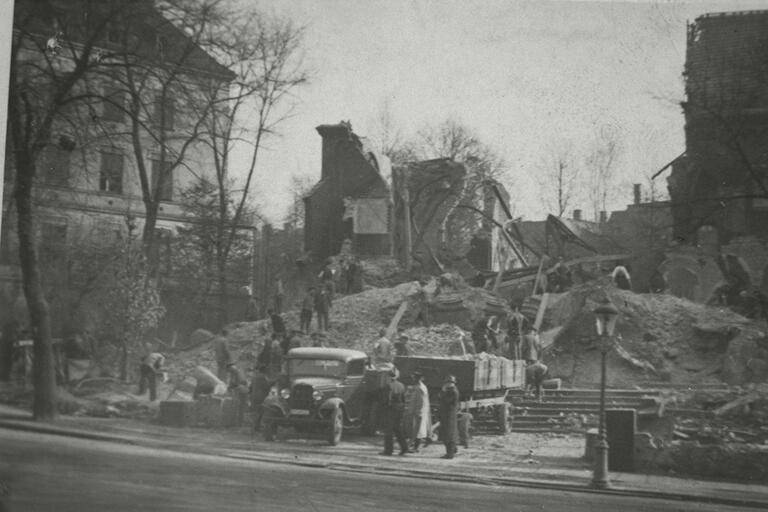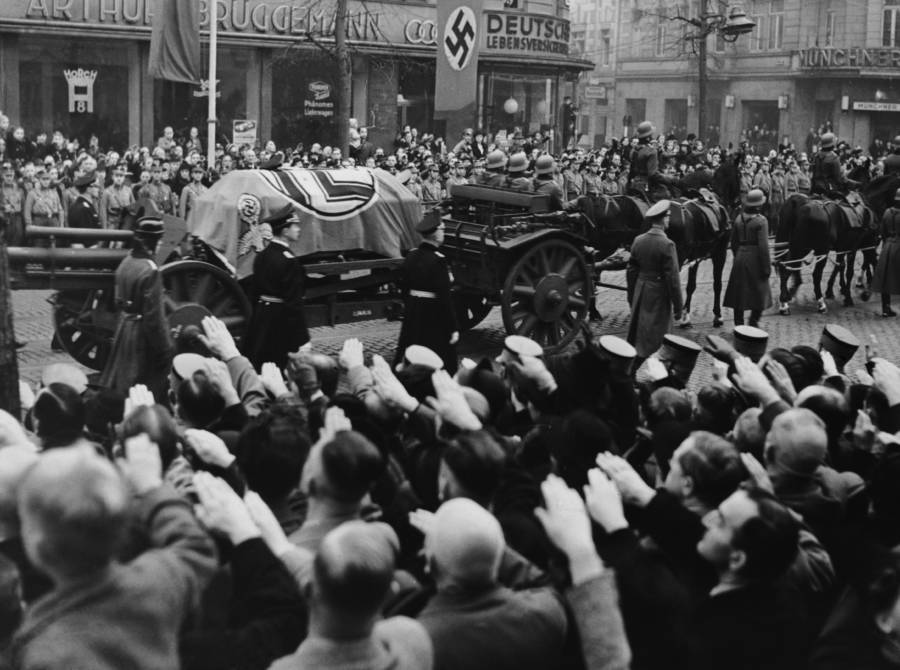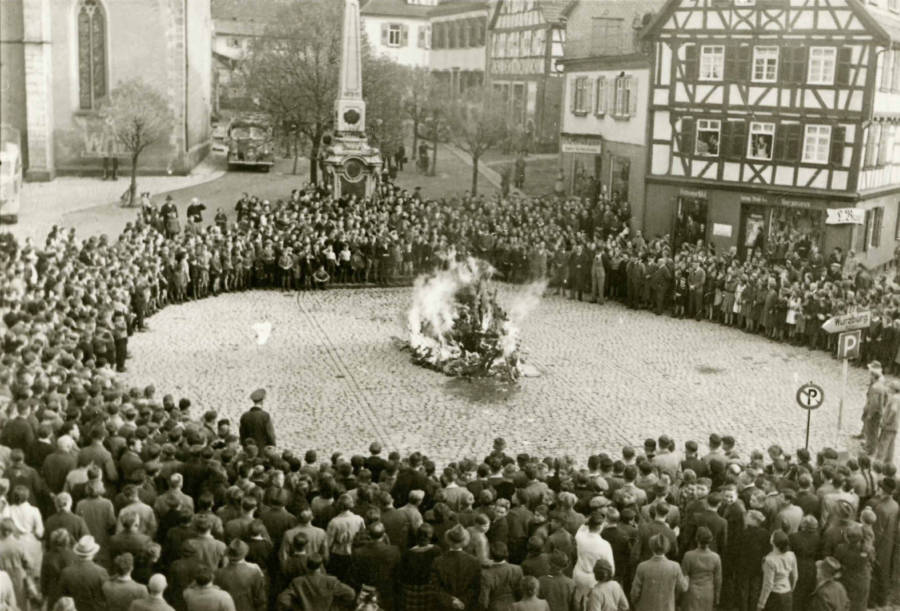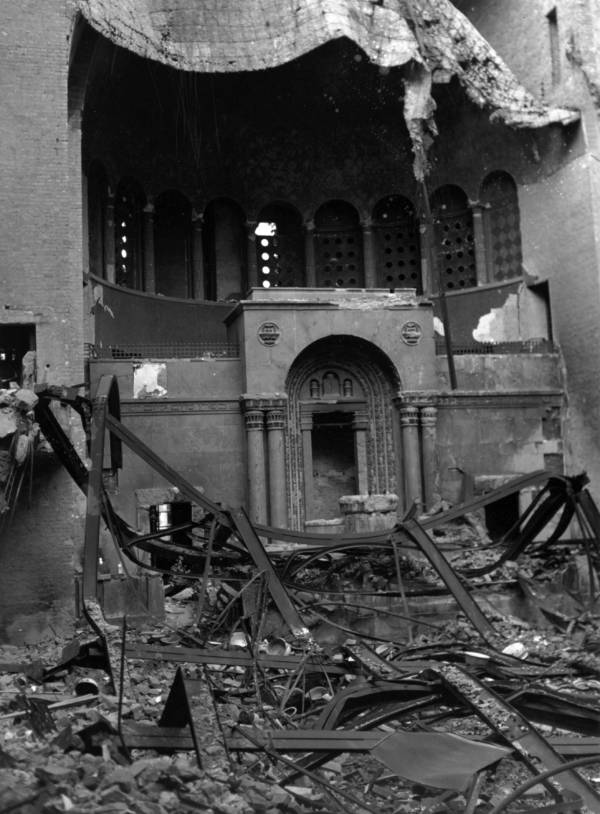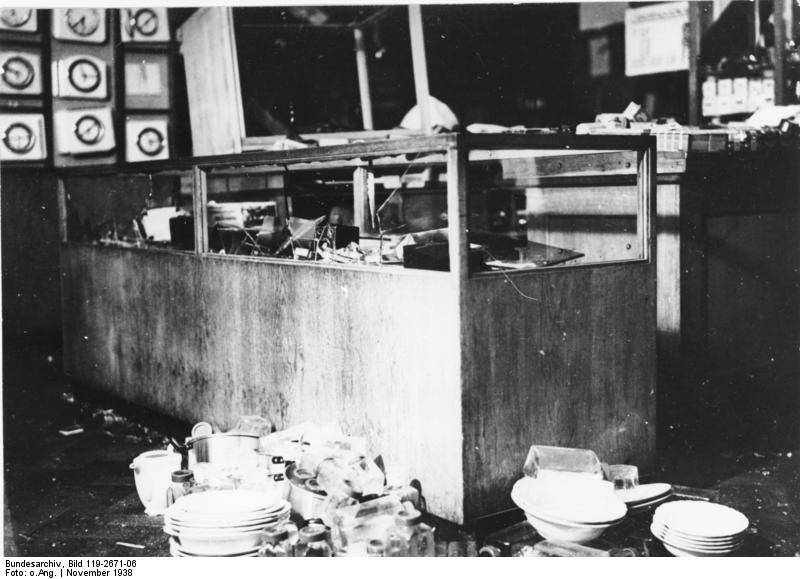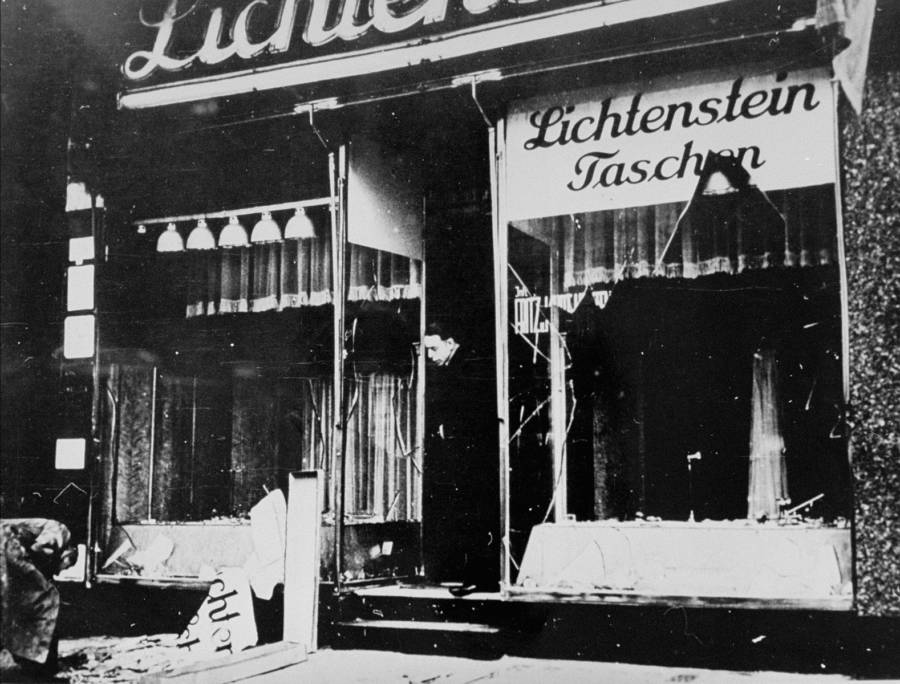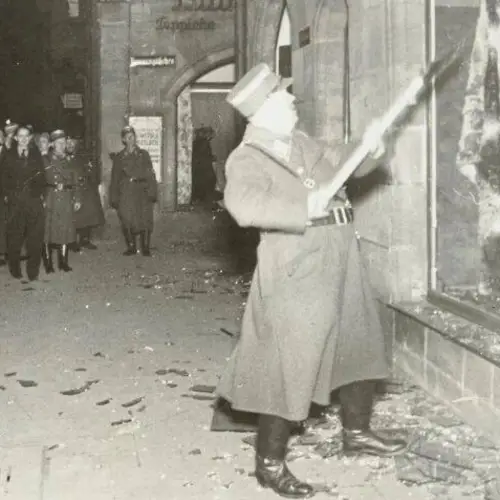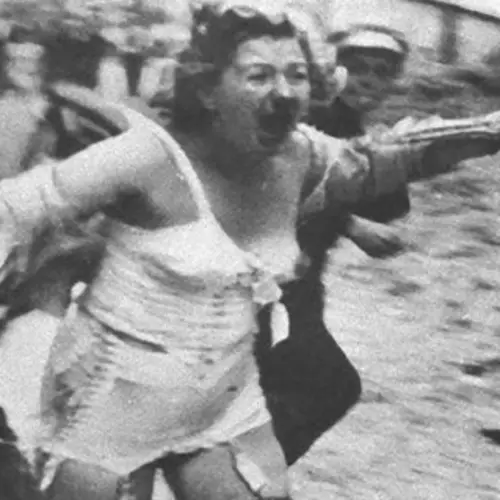The anti-Jewish pogrom of November 1938 known as the "Night of Broken Glass" foreshadowed the Holocaust and the deaths of some 6 million European Jews.
In 1938, over the course of fewer than two days, nearly 100 German Jews lost their lives in a series of brutal anti-Semitic attacks that became known as Kristallnacht or the "Night of Broken Glass."
From the night of November 9 through the next day, scores of Nazis and their followers burned, vandalized, and destroyed thousands of Jewish synagogues, businesses, and homes throughout Germany (which, at the time, also included present-day Austria as well as portions of what is now the Czech Republic).
This pogrom — a word for large-scale persecution of an ethnic or religious group that has often been applied to acts of violence against Jews in Europe — represented a turning point in the path toward the Holocaust.
Since Adolf Hitler's rise to power in 1933, most of the Nazi laws enacted to oppress Jews were non-violent and instead social, political, and economic in nature. But what happened during Kristallnacht is that Nazi action against the Jews turned violent — and deadly.
In response to the "Night of Broken Glass," the Nazis sent some 30,000 Jewish males to concentration camps in a move that foreshadowed the sending of millions to such camps over the coming years. Within days of Kristallnacht, Nazi leader Hermann Göring gathered party officials for a meeting and told them, "I have received a letter written on the Führer's orders... requesting that the Jewish question be now, once and for all, coordinated and solved one way or another."
Europe was now one decisive step closer to the Holocaust. In the words of historian Max Rein, "Kristallnacht came... and everything was changed."
The Persecution Of German Jews
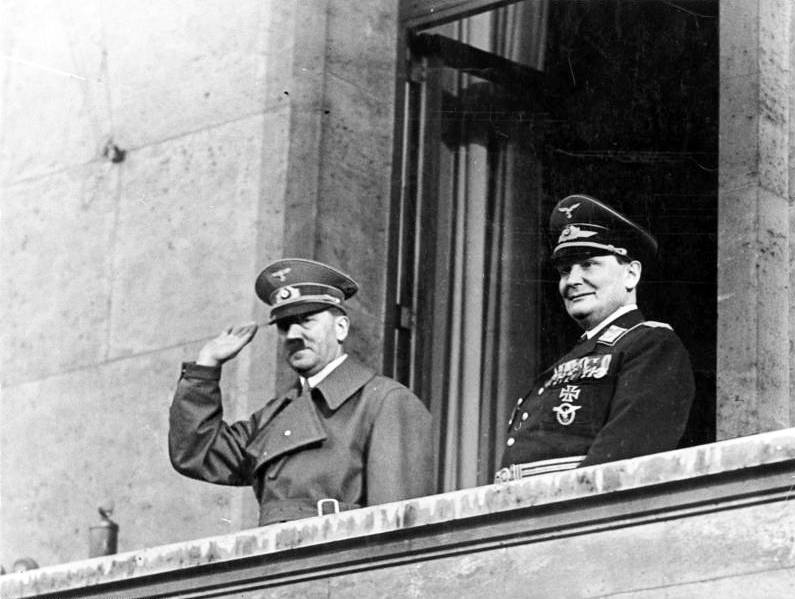
German Federal ArchivesAdolf Hitler with Hermann Göring in Berlin. 1938.
Shortly after Hitler became Germany's chancellor in 1933, he and his Nazi leadership began implementing various policies designed to both isolate and persecute Germany's Jewish population. In the five years between Hitler taking office and the "Night of Broken Glass," countless non-violent anti-Semitic laws came into effect throughout Germany.
German businesses began to refuse service to Jews while one law forbade kosher butchering. Then Jews were barred from the legal profession and civil service.
Restrictions were placed on Jewish children attending German public schools and eventually, Jews were banned from voting in parliamentary elections.
And after the Nuremberg Laws were enacted in 1935, only an Aryan could hold full German citizenship and it was illegal for marriages or sexual relationships to happen between Jews and Aryans. Jews were now officially classified as enemies of what was now legally an Aryan state.
Signs saying "Jews Not Welcome" and the like had begun to pop up throughout cities in Germany. Though, in an effort to keep the extent of their anti-Semitism hidden from the rest of the world, the Nazis removed such signs when Berlin hosted the Olympics in 1936.
Nevertheless, the situation grew worse in October 1938 when 17,000 Jews with Polish citizenship who had been living in Germany for decades were arrested and sent back to Poland.
And some of the Polish Jews who were sent out of Germany were a man named Zindel Grynszpan and the members of his family. The story of what happened during Kristallnacht in many ways begins there.
Herschel Grynszpan And The Start Of The "Night Of Broken Glass"
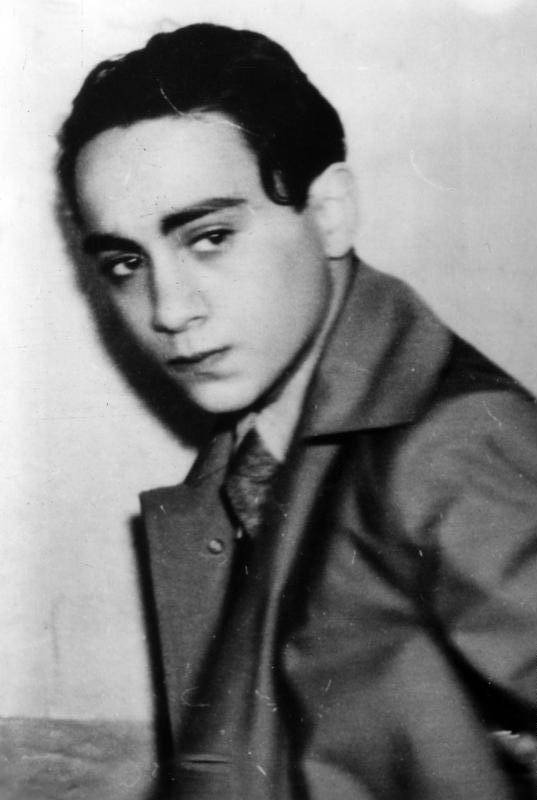
German Federal Archives17-year-old Herschel Grynszpan after his arrest for the shooting of Ernst vom Rath, the event that immediately precipitated Kristallnacht.
17-year-old Herschel Grynszpan was living with his uncle in Paris when he received word that his father and the rest of his family had been deported from Germany. Outraged at the news, Herschel decided to go to the German embassy in France and kill the German ambassador as revenge.
The German ambassador to France was not at the embassy when Herschel arrived so he settled for a lower-ranking German diplomat named Ernst vom Rath. On November 7, 1938, Herschel shot vom Rath and two days later, he died from his wounds.
Vom Rath's death was exactly what the Nazis needed to rile up their followers and justify turning their ostensibly non-violent policies against Jews into explicitly violent ones.
When news of vom Rath's death reached Hitler and propaganda minister Joseph Goebbels, Nazi leadership gave the order to commence with the violence that we now know as Kristallnacht, the "Night of Broken Glass."
Shortly before midnight on November 9, 1938, Heinrich Müller, the Gestapo chief, sent an order to all of the police units throughout Germany saying, "in shortest order, actions against Jews and especially their synagogues will take place in all of Germany. These are not to be interfered with."
Müller commanded that the only time at which law enforcement and firemen were allowed to step in and help was when fires threatened to destroyed Aryan-owned properties. Germany's thousands of Jews, however, were on their own.
What Happened During Kristallnacht

United States Holocaust Memorial Museum, courtesy of National Archives and Records Administration, College ParkGerman men pass by the broken shop window of a Jewish-owned business that was destroyed during Kristallnacht.
Müller's orders opened the floodgates for what happened during Kristallnacht on the night of Nov. 9 and into the next day.
Nazis vandalized, destroyed, and burned down countless Jewish synagogues, homes, schools, businesses, hospitals, and cemeteries. Close to 100 Jewish lives were lost across Germany and hundreds more were severely injured.
As one firefighter recalled:
"One of my friends, who lived next to the Synagogue, whispered to me, 'Be quiet - the Synagogue is burning; I was beaten up already when I wanted to put out the fire.' Eventually we were allowed to take the fire engines out, but only very slowly. We were ordered not to use any water till the whole synagogue was burned down. Many of us did not like to do that, but we had to be careful not to voice our opinions, because 'the enemy is listening.'"
Meanwhile, another witness, a non-Jewish Englishman, remembered:
"By now the streets were a chaos of screaming bloodthirsty people lusting for Jewish bodies. I saw Harrison of The News Chronicle, trying to protect an aged Jewess who had been dragged from her home by a gang. I pushed my way through to help him and, between us, we managed to heave her through the crowd to a side street and safety."
The Germans even destroyed an orphanage in the town of Dinslaken, where one man reported:
"About 50 men stormed into the house, many of them with their coat or jacket collars turned up. At first, they rushed into the dining room, which fortunately was empty, and there they began their work of destruction, which was carried out with the utmost precision. The frightened and fearful cries of the children resounded through the building."
And while the destruction took place, some Germans enjoyed the show. As one British correspondent on the scene described it:
"Mob law ruled in Berlin throughout the afternoon and evening and hordes of hooligans indulged in an orgy of destruction. I have seen several anti-Jewish outbreaks in Germany during the last five years, but never anything as nauseating as this. Racial hatred and hysteria seemed to have taken complete hold of otherwise decent people. I saw fashionably dressed women clapping their hands and screaming with glee, while respectable middle-class mothers held up their babies to see the 'fun.'"
Ultimately, by the time the "Night of Broken Glass" had come to a fiery end, more than 1,000 synagogues were burned and almost 7,500 Jewish businesses were destroyed. Soon after, around 30,000 Jewish males between 16 and 60 years old were arrested and sent to the Dachau, Buchenwald, and Sachsenhausen concentration camps.
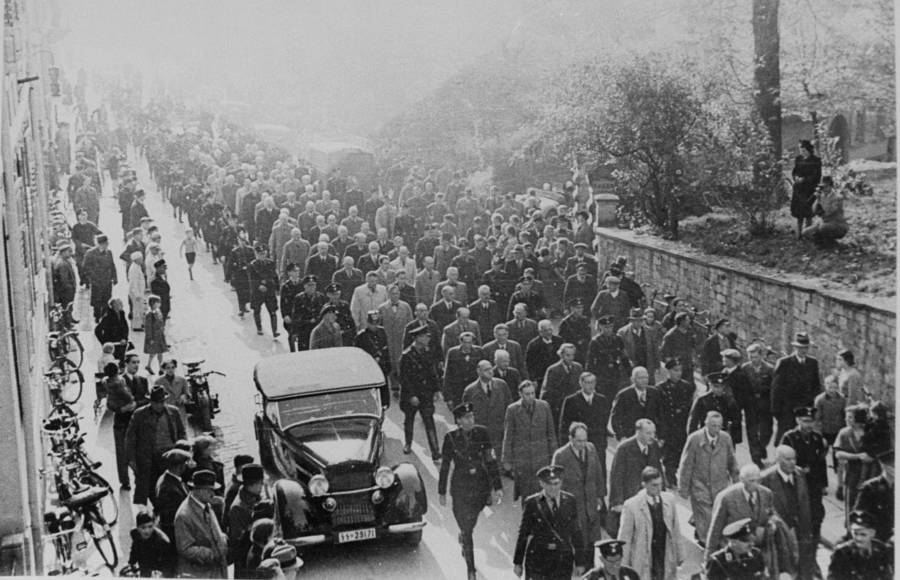
United States Holocaust Memorial Museum, courtesy of Lydia ChagollA group of male Jews who were arrested during Kristallnacht and forced to march through the streets under SS guard to watch the desecration of a synagogue, then be deported.
The Nazis claimed that what happened during Kristallnacht was caused by "spontaneous outbursts" and actually ordered the German-Jewish community to accept all of the financial responsibility for the destruction. What's more, the Nazis stole any compensation that insurance companies paid to Jews and imposed a fine of $400 million dollars (in 1938 terms) on them.
And things were only about to grow worse from there.
As Hermann Göring, the man who dumped this financial burden on the Jews, said after the "Night of Broken Glass": "The swine won't commit another murder. Incidentally...I would not like to be a Jew in Germany."
The Impact And Aftermath Of Kristallnacht

United States Holocaust Memorial Museum, courtesy of Stadtarchiv StadthagenA small group of Jewish men rounded up after Kristallnacht being escorted down the street by German police.
The events of Nov. 9 and 10 were devastating not only because of what happened during Kristallnacht itself but also because of the standard it set for violence against Jews in Germany. Before the "Night of Broken Glass," anti-Semitism was largely non-violent, but afterward, that was no longer the case.
In response, many European Jews began to escape from their home countries, fleeing the violence that they knew was not far off.
Beyond Europe, the impact of what happened during Kristallnacht was felt all over the world. In the United States, about a week after the attacks, President Franklin D. Roosevelt publicly denounced the anti-Semitism in Germany and recalled his ambassador to the country.
However, the U.S. refused to lessen their harsh restrictions on immigration, saying that they feared the possibility of Nazi infiltrators setting up shop in their country. Although, another reason might have been the anti-Semitic beliefs of some of the United States' own high-ranking officials.
And in Germany, anti-Semitic state policies only became even more oppressive. By the end of that year, Jewish children were prevented from attending public schools, local curfews for Jews were put in place, and they were likewise banned from visiting most public places in the country.
In the years that followed, the Holocaust began and what happened during Kristallnacht served as grim foreshadowing of what lay ahead.
After this look at what happened during Kristallnacht, the "Night of Broken Glass," discover the story of Irena Sendler, the woman who saved 2,500 children during the Holocaust. Then, read up on the Nazi experiments of infamous concentration camp doctor Josef Mengele.
